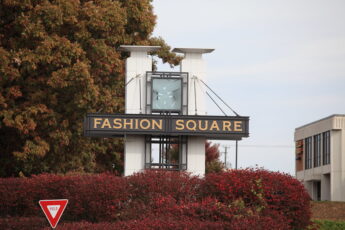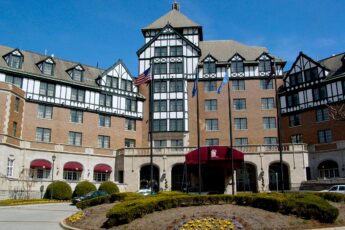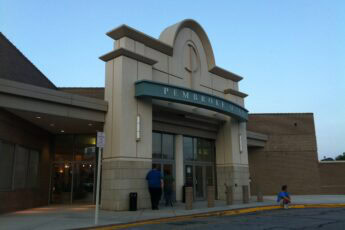Where the Side Streets Pull You In
The streets lean toward the river, edged with brick and framed by weathered storefronts. Alexandria, Virginia, looks like history held its breath.
You pass shuttered windows, then light spills from a gallery or a wine shop. Here, the old mixes with the unplanned: colonial trim next to bike racks, Federalist cornices above coffee counters.
Visitors track down George Washington's trail. They stay because the corners pull you in. For anyone scanning things to do in Virginia, the draw feels immediate.
How Alexandria Fills a Free Afternoon
Alexandria is compact, but it doesn't rush.
With an hour to spare, you might be watching the water shift along the docks or walking through a 1918 torpedo factory now packed with painters and printmakers.
Tourism swelled after 1983, when Old Town joined the National Register of Historic Places.
That move turned local zoning into national attention.
The waterfront followed: the Alexandria Marina opened in 1992, Waterfront Park reworked its public space in 2019, and foot traffic grew with it.
Those changes didn't reshape the city as much as tighten its rhythm.
You don't have to plan a full day. Half an hour here often stretches longer. The city makes use of short visits.
Old Town Alexandria
King Street anchors Old Town.
It cuts straight through the district's grid, marked by 18th-century rowhouses, gas lamps, and storefronts with long tenant histories.
The streetcar ran here until 1932. Now, a free trolley runs the same stretch, from the King Street Metro to the waterfront.
Zoning preserved the district's scale, so nothing rises far above three stories.
Restaurants, bookstores, and boutiques lean into that framework.
The district moves at a walkable pace, with less planning and more wandering.
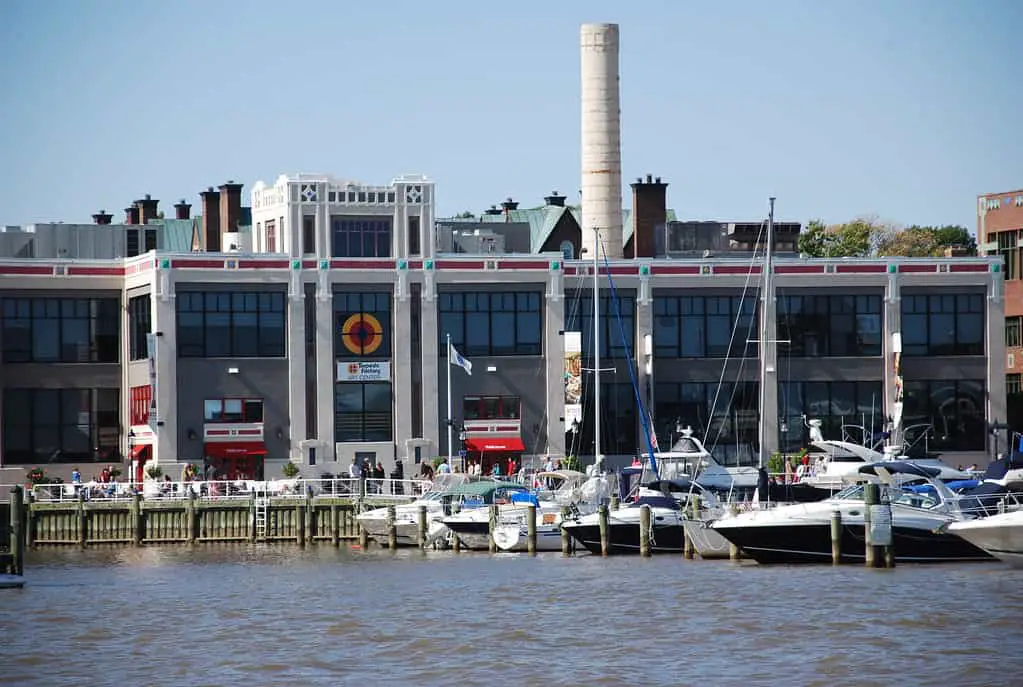
Torpedo Factory Art Center
On November 12, 1918, the U.S. Navy began construction on a torpedo station at the river's edge.
That timing matters - World War I had ended one day earlier.
The building stayed industrial until 1974, when artists started occupying the space.
Today, the Torpedo Factory holds 82 studios and eight galleries.
Painters, ceramicists, and photographers work in public view, and the hallways feel less like a museum than a production floor.
It's one of the better-known attractions in Alexandria.
Old Town Alexandria Waterfront
The waterfront section of Old Town runs from Founders Park to Jones Point.
Dockside dining, water taxis, and a line of benches make it easy to idle.
The Alexandria Marina, opened in 1992, added permanent slips and formalized boat access.
From this area, City Cruises operates routes to National Harbor, The Wharf, and Georgetown.
Piers remain active year-round. Boats dock, board, and move again. The whole stretch feels fluid.
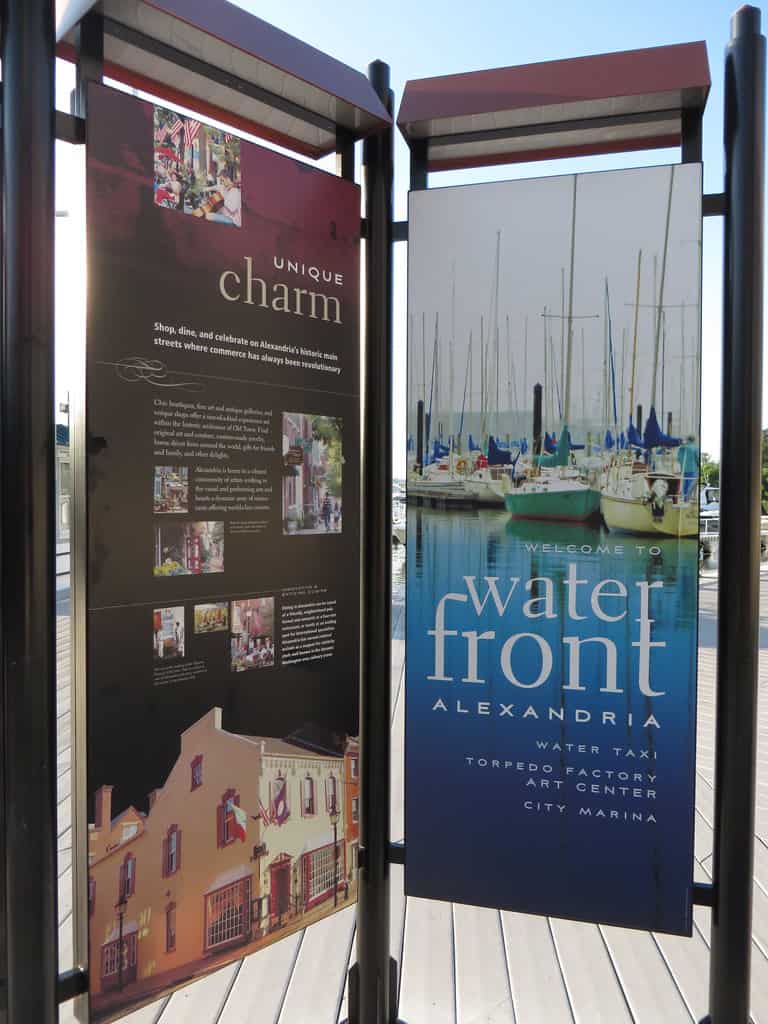
Waterfront Park
Waterfront Park sits at 1 Prince Street, but it doesn't feel like an isolated site.
It connects to Old Town's commercial section and lets traffic spill out toward the water.
Renovations completed in 2019 reworked the open lawn, walkways, and seating into one continuous, unfenced stretch.
Since 2019, the site has also hosted an annual temporary art installation.
One of the first - "Wrought, Knit, Labors, Legacies" - used shipping forms and quilt patterns to mark Alexandria's past in the slave trade.

The George Washington Masonic National Memorial
The Memorial stands 333 feet tall on a slope west of Old Town.
Groundbreaking took place on June 5, 1922. It was dedicated a decade later, on May 12, 1932.
The structure is pulled from Greek Revival and Art Deco, but the bulk is made of stone and stairs.
The museum and observation deck open seasonally, with exhibits focused on George Washington's Masonic connections.
For people exploring things to do in Alexandria, Virginia, the Memorial stands out both in height and focus.

Jones Point Park
Jones Point extends from the base of the Woodrow Wilson Bridge, along the Potomac's edge.
In the early 1800s, the area handled naval shipping.
Later, it housed one of the country's first concrete-lens lighthouses, built in 1855.
The park includes trails, basketball courts, and open grass beneath the bridge supports.
Near the riverbank, one stone remains from the original 1791 boundary survey of the District of Columbia.
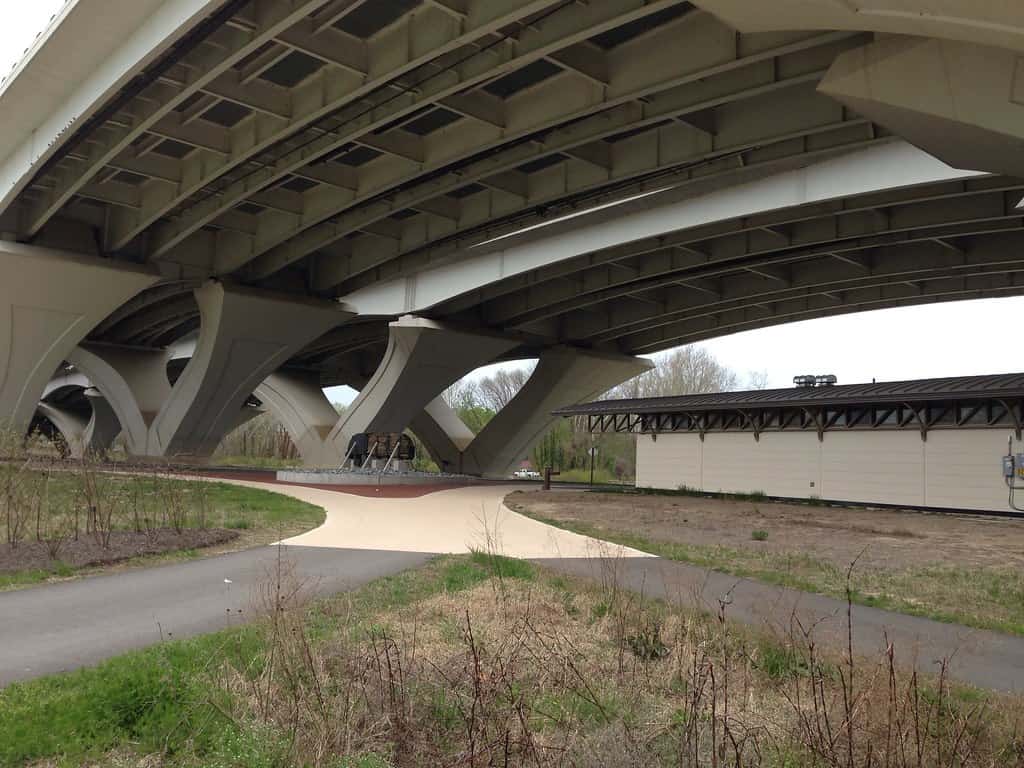
Mount Vernon Trail
The Mount Vernon Trail runs 18 miles from Roosevelt Island to George Washington's Mount Vernon estate.
Around Alexandria, it passes Daingerfield Island, the marina, and several public parks.
Cyclists, runners, and walkers use it year-round. It's part of the Potomac Heritage National Scenic Trail system.
If you're looking for places to visit in Alexandria, this trail connects several without needing a car.
Market Square
Market Square has hosted vendors since 1753. Today, a farmers' market runs on Saturdays, with produce, baked goods, and local crafts.
City Hall anchors the square's west side.
On weekdays, the plaza stays quieter - lunch breaks, chess players, and city workers crossing in small groups.
Public events rotate seasonally, but the square's scale remains fixed.
Alexandria's Parks and Outdoor Spaces
The city keeps about 900 acres marked for public use.
Some, like Four Mile Run Park, offer fields and trails.
Others, like Windmill Hill, edge the water with less design and fewer people.
The Park Planning office lists over 70 sites, ranging from dog runs to formal gardens.
In 2020, updated trail maps and amenity guides were released to help distribute use.
These patches show up frequently when browsing what to see in Alexandria.
Many of them stay hidden in plain sight.
Accessibility and Transportation
King Street Station links Alexandria to Amtrak's Northeast Corridor and to Washington Metro's Blue and Yellow Lines.
That dual access keeps the city in reach for D.C. residents and regional travelers.
A free King Street Trolley runs from the station to the riverfront.
Riders board every 15 minutes, no fare. The system makes quick visits possible without a car or much planning.
FAQ
Is Alexandria, VA, worth visiting?
Yes. The city holds more than 270 years of layered history in a walkable grid.
Cobblestone alleys, preserved architecture, and riverfront parks line up beside functional spaces.
Places operate without theatrical polish, which makes them easier to stay in.
The list of things to do in Alexandria, Virginia, isn't long because of any single attraction - it's long because the city works at a human pace.
How do I spend a day in Alexandria, VA?
Start in Old Town. Walk east on King Street from the Metro toward the river.
Stop at local shops, detour into the Torpedo Factory Art Center, and spend some time along the waterfront.
If you have more hours, walk the Mount Vernon Trail south or visit the George Washington Masonic National Memorial.
One day isn't wasted here - it's well-used.
Can you walk around Old Town Alexandria?
Yes, easily. Old Town was laid out in 1749 on a grid that still holds.
The blocks are short, the sidewalks are wide enough, and the buildings stay low.
A free trolley runs east to west, but most visitors end up walking - intentionally or not.
What is the famous street in Alexandria?
King Street. It begins at the waterfront and climbs west toward the George Washington Masonic National Memorial.
Along the way, you'll pass restaurants, galleries, bookstores, and shops housed in 19th-century structures.
It's both a commercial hub and a physical map of what the city has chosen to keep.
Is one day enough for Alexandria?
Enough to get a sense, yes. Enough to see everything, no. The city rewards repeat visits, but if all you have is a single day, it can still work.
Start early, keep your stops close together, and stay off your phone - things are easier to notice when you're walking slowly.
🍀


